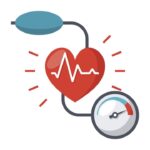As the final months of the year witness a surge in respiratory illnesses within the community, understanding the various factors leading to respiratory diseases empowers individuals to proactively safeguard their health.
1. Common Respiratory Ailments
Respiratory diseases often intensify during the colder months, affecting anyone, particularly children, the elderly, and those with weakened immune systems. Common respiratory ailments include the flu, sinusitis, laryngitis, bronchitis, bronchiolitis, and pneumonia. Additionally, chronic conditions like asthma, bronchiectasis, and chronic obstructive pulmonary disease (COPD) can exacerbate or worsen under favorable conditions.

2. Causes of Respiratory Diseases
2.1 Infections as Primary Causes of Respiratory Diseases
Respiratory infections may affect various parts of the upper (sinuses, nose, throat, larynx) or lower respiratory tract (trachea, bronchi, lungs). Upper respiratory infections are often caused by viruses, leading to symptoms such as throat and nasal inflammation and sinusitis. Lower respiratory infections, commonly bacterial, can result in bronchitis, bronchiolitis, or pneumonia. Seasonal changes with unusual temperatures and limited sunlight create favorable conditions for the proliferation and spread of viruses and bacteria, especially when the immune system has not fully adapted to environmental changes.
Mild respiratory infections typically resolve with proper antibiotic treatment, but severe infections can lead to complications, posing a threat to the patient’s life.
2.2 Impact of Irritants
Cigarette smoke, dust, exhaust fumes, and toxic chemicals entering the respiratory system can cause inflammation in one or multiple parts. Individuals regularly exposed to these substances in their living or working environments, particularly those with sensitive respiratory systems, are more prone to respiratory diseases.
2.3 Trauma-Induced Respiratory Issues
Injuries to the respiratory system or its vicinity, such as rib fractures from falls, lung compression from workplace accidents, or chest punctures from accidents, can lead to respiratory diseases. In such cases, inflammatory responses occur as the body attempts to heal the injuries.
2.4 Associated Medical Conditions
Chronic obstructive pulmonary disease (COPD): Strongly linked to smoking habits, COPD results in excess mucus in the lungs, causing respiratory inflammation and damage.
– Systemic diseases: Conditions like lupus, rheumatoid arthritis, fibromyalgia, and granulomatosis can trigger respiratory inflammation, often recurring over time.
– Cystic fibrosis: A genetically influenced and dangerous disease leading to chronic obstructive pulmonary disease, bronchitis, and chronic bronchiolitis. In severe cases, it may progress to chronic cor pulmonale.
– Pericarditis: While primarily a heart-related inflammation, it can extend to adjacent organs such as the respiratory system, causing chest pain and, in severe cases, aggravated by coughing or deep breathing.
– Pulmonary embolism: Characterized by blood clots in the lungs, this condition induces shortness of breath, chest pain, and, in severe instances, fainting and death.
– Lung cancer: The appearance of malignant tumors in the respiratory tract can result in symptoms such as prolonged cough, coughing up blood, hoarseness, chest pain, breathlessness, and wheezing. Severe complications may include difficulty breathing, coughing up blood, and pleural effusion.
3. Preventive Measures for Respiratory Health
Individuals can take proactive steps to minimize the impact of respiratory diseases by limiting exposure to disease-causing agents. Especially for infections caused by bacteria, viruses, and environmental irritants, preventive measures play a crucial role in not only ensuring personal health but also reducing the overall disease burden on the community.
Here are some actions individuals can take to prevent respiratory diseases:
3.1 Vaccination to Prevent Respiratory Diseases
Vaccination remains the most effective method to prevent respiratory diseases caused by viruses. It is essential to receive annual vaccinations to stay updated on new viral strains. The immune system only responds to viruses it has encountered before, leaving individuals susceptible to diseases caused by other agents.

Vaccination remains the most effective method to prevent respiratory diseases caused by viruses.
3.2 Maintain Personal and Environmental Hygiene
Regular hand washing with antibacterial soap, using saline to clean the throat and nose, and practicing good respiratory hygiene are proactive measures anyone can undertake. Additionally, maintaining a clean and well-ventilated living space, especially for frequently touched surfaces like doorknobs, switches, and communal items, helps limit bacterial and viral spread.

Using physiological saline to clean your nose every day is the simplest way to push bacteria out
3.3 Keep the Body Warm
Ensuring adequate warmth through appropriate clothing, wearing hats, scarves, and masks when venturing outside during colder weather, and maintaining stable indoor temperatures can protect the respiratory system. Avoiding sudden temperature changes is crucial for respiratory health.
3.4 Maintain a Nutritious Diet and Engage in Regular Exercise
Consuming a balanced diet with essential nutrients and supplementing necessary vitamins and minerals strengthens the immune system against disease-causing agents. Regular exercise enhances blood circulation, improving the body’s ability to combat illness.
3.5 Limit Exposure to Crowded Areas
During periods of widespread respiratory illnesses, minimizing visits to crowded places reduces the risk of close contact with potential sources of infection.
By understanding the fundamental causes of respiratory diseases and adopting proactive preventive measures, individuals can actively safeguard their health and that of their community.








